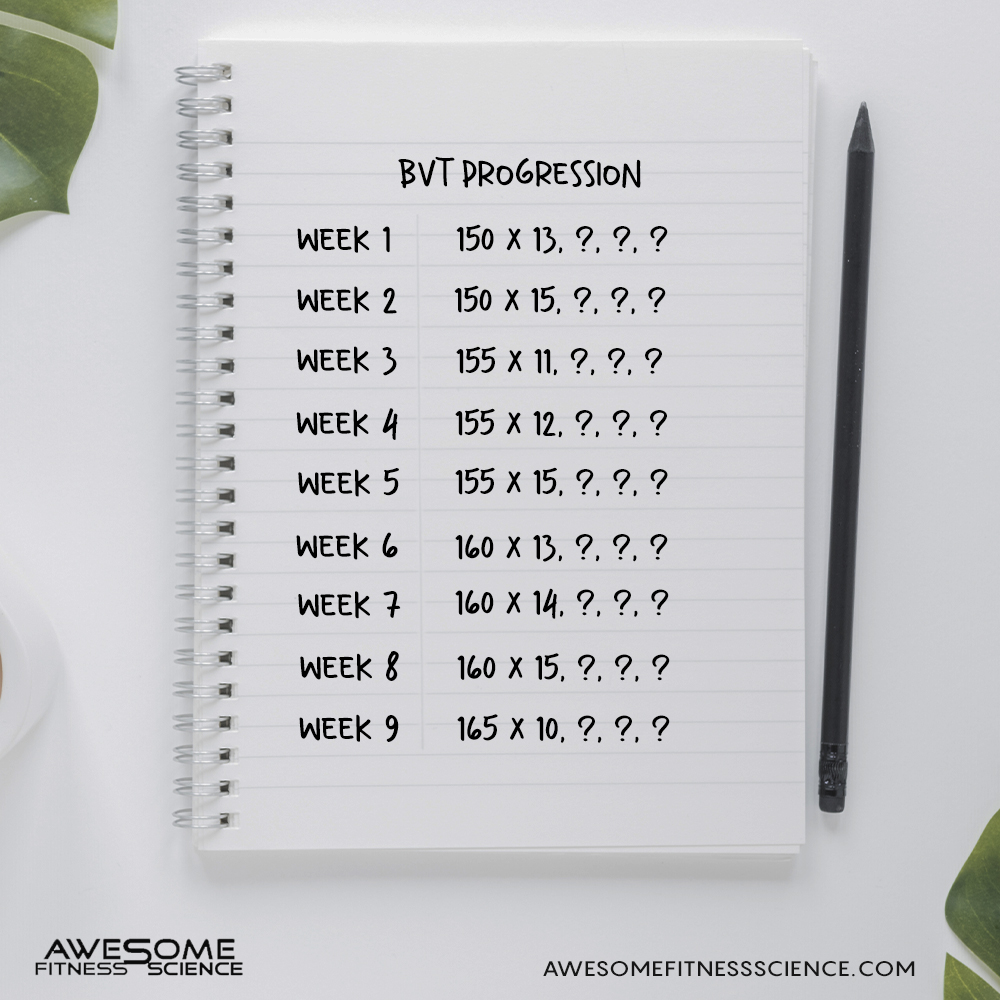
Keys to Dieting Consistency and Success
You could know everything about food like a wizard and have the most science proven diet in place, but if you can’t stick to that style of eating consistently, you won’t see any results. Period.

Blind volume training is a progressions system that autoregulates the training stress while allowing lifters to progress smoother, focus on lifting technique, and not get obsessive about training numbers.
It’s a method I learned from Menno Henselmans who calls it autoregulatory volume training. That’s a bit too wordy for me, so I changed it to blind volume training or BVT for short.
With BVT, you use your first set of an exercise as a benchmark for progression. All subsequent sets programmed are blind sets meaning you don’t have any sort of intended rep range and you perform the set without counting reps entirely.
You simply continue using the same working weight and aim for a proximity to failure. For my clients, I have them aim within 4 or fewer reps shy of failure.
The blind sets allow you to add volume via additional sets, so you get your intended hypertrophic dosage, but by not having to hit a certain reps, this normalizes your training stress more which can prevent overreaching and minimize the need to deload.
So let’s say, your target rep range is 8-12. Last week, you overhead pressed 195 for 10 reps, so this week you’ll aim for 12 reps with 195 to max out the rep range.
You do your first set and barely squeezed out 12 reps as you feel your muscles tap out and your joints nearly crack. Naturally, you will perform much fewer reps each set in the blind sets and that’s ok. That’s all the training stress you can handle this week which will likely still give you some adaptations.
However, let’s say sleep/recovery has been on point and a hot girl is watching. You make it look easy cranking out 12 reps with plenty left in the tank. Well, in your blind sets, you can and will naturally do more reps. This ensures you take advantage of all available reps that training day allowed for.
This is what I mean when I say BVT autoregulates the training stress towards your recovery.
Example BVT Progression
Here’s of a sample logbook that uses BVT to progress within a rep range of 10-15 across 4 sets.

As you can see, you only count reps on the first set. If you max out the rep range, you can increase the working weight next week.
Because the blind sets have no performance expectation, research finds this can enhance force production (1,2). In fact, the blind sets are a perfect time to focus all your mental attention towards optimizing technique. You don’t have to worry about hitting PR’s for every set, so make every rep look picture perfect.
BVT is a good balance between still having some objective marker to progress while preventing lifters from obsessing over every little number in the log book. Cause you know, it can be overwhelming seeing dozens of sets programmed across a training week with the expectation that each set must progress.
I generally use BVT with advanced lifters who know how to push themselves. If you don’t push yourself close to failure, your blind sets are essentially wasted sets. Thus, BVT is something I periodize into the programs of my advanced lifters.
BVT can be done for any exercise except for unilateral exercises because the stronger limb will likely perform more volume and can further exacerbate strength imbalances. Alternating unilateral exercises should be fine though like alternating walking lunge where you to alternate legs each rep within a set.
As for when to stop BVT, you can keep using BVT based on preference and progression. If you keep getting stronger on your first benchmark set, there’s no need to stop. Essentially, milk the cow of all it has. However, if you’re plateaued on the first benchmark set for longer than a week, you can perform some form of deload.
If you’re plateaued for longer, it’s best to cease BVT as your blind sets could be all over the place and dropping in performance severely without you knowing. That’s when you should reduce total training volume (number of sets) to allow for proper recovery or start tracking all sets again.
Blind Volume Training is good for you. Do it. I wish I could give a more profound recap, but this article is pretty short, so if you skipped to the bottom, I would really be questioning your pea sized attention span.
1. Halperin, Israel, et al. “Knowledge of Repetitions Range Affects Force Production in Trained Females.” Journal of Sports Science & Medicine, Uludag University, 1 Dec. 2014, http://www.ncbi.nlm.nih.gov/pmc/articles/PMC4234941/.
2. J;, Snarr. “Effect of Bench Press Load Knowledge on One Repetition Maximum Strength.” Journal of Strength and Conditioning Research, U.S. National Library of Medicine, https://pubmed.ncbi.nlm.nih.gov/30946265/.
Grab my free checklist on how to defeat your worst food cravings

You could know everything about food like a wizard and have the most science proven diet in place, but if you can’t stick to that style of eating consistently, you won’t see any results. Period.

Refeeds are essentially mini diet breaks. However, instead of going to maintenance for weeks at a time, refeeds only last days. Some people also take refeeds into a surplus.

Have you heard of reverse dieting? If you haven’t, don’t look it up because there’s an endless stream of YouTube videos and articles regurgitating this nonsense.